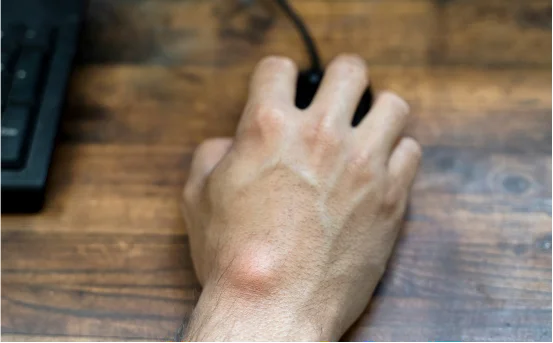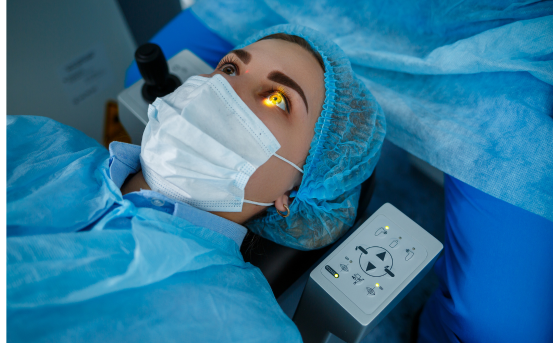Cysts are fluid-filled sacs that can develop in various parts of the body, including the skin, ovaries, kidneys, and other internal organs. While most cysts are benign and harmless, some may become painful, infected, or cosmetically concerning prompting the need for surgical removal. Cyst removal surgery is a routine, minimally invasive procedure that helps relieve discomfort and prevent potential complications. Understanding the process involved in cyst removal surgery is essential for patients preparing for the procedure or those simply seeking knowledge about this common medical intervention.
Process Involved in Cyst Removal Surgery
The process begins with a consultation with a healthcare provider, typically a general practitioner, dermatologist, or specialist, depending on the location and nature of the cyst. During this visit, the doctor will:
-
Take a detailed medical history
-
Perform a physical examination
-
Assess the size, location, and type of cyst
If the cyst is deep-seated or located in a sensitive area (such as the ovaries or organs), the doctor may order imaging tests like an ultrasound, CT scan, or MRI to evaluate the cyst’s structure and determine if surgery is necessary.
Some common types of cysts that may require removal include:
-
Epidermoid cysts
-
Ovarian cysts
-
Ganglion cysts
-
Baker’s cysts
-
Pilonidal cysts
Preoperative Preparation
Once surgical removal is recommended, patients will undergo standard preoperative assessments. This phase includes:
-
Blood tests to check overall health and rule out infections.
-
Allergy history review, especially for anesthesia or medications.
-
Instructions for fasting, typically 6-8 hours before surgery if general anesthesia is planned.
-
Discussion of surgical risks and signing of informed consent forms.
In some minor cases, such as the removal of small skin cysts, the procedure can be done on an outpatient basis under local anesthesia, requiring minimal preparation.
Type of Anesthesia
The choice of anesthesia depends on the size and location of the cyst and the complexity of the surgery. Options include:
-
Local anesthesia :- Used for small, superficial cysts. The area is numbed, and the patient remains awake.
-
Regional anesthesia :- Numbs a larger area but not the entire body.
-
General anesthesia :- Used for deeper or larger cysts, or when the surgery is complex or involves internal organs.
Your doctor and anesthesiologist will discuss the safest and most comfortable option for you.
Surgical Procedure
The surgical process varies based on the cyst’s location and type, but generally follows these steps:
-
Skin Cyst Removal :- For superficial cysts, like sebaceous or epidermoid cysts:
- Cleansing of the area with an antiseptic solution.
- Administration of local anesthesia to numb the area.
- Small incision over the cyst.
- Careful dissection and removal of the entire cyst sac to prevent recurrence.
- Irrigation of the site, if necessary, to eliminate any residual material.
- Suturing (stitches) or use of adhesive strips to close the incision.
The entire process usually takes 20–45 minutes.
- Ovarian or Internal Cyst Removal :- In cases where the cyst is located internally, such as in the ovaries or liver:
- Patient is placed under general anesthesia.
- Laparoscopic or open surgery is performed:
- Laparoscopy involves small incisions and the use of a camera for guidance.
- Laparotomy (open surgery) is used for larger cysts or when cancer is suspected.
- Careful removal of the cyst, preserving surrounding tissues.
- Closure of incisions and monitoring for bleeding or complications.
The duration can range from 1 to 3 hours, depending on complexity.
Postoperative Recovery
After surgery, recovery time depends on the cyst type, surgical method, and individual healing ability. Here’s what to expect:
-
For Skin Cyst Removal
-
Patients can usually go home the same day.
-
Mild pain or swelling may occur, managed with over-the-counter painkillers.
-
Dressings should be kept clean and dry.
-
Stitches may be removed within 7–10 days.
-
-
For Internal Cyst Removal
-
Hospital stay may be required (1–3 days).
-
Pain management with prescribed medications.
-
Gradual return to normal activities over 1–2 weeks (laparoscopic) or 4–6 weeks (open surgery).
-
Regular follow-ups for wound assessment and healing progress.
-
Potential Complications
While cyst removal surgery is generally safe, there are some risks associated with the procedure:
-
Infection at the surgical site
-
Bleeding or hematoma formation
-
Scarring
-
Recurrence of the cyst, especially if the entire sac isn’t removed
-
Damage to nearby tissues (rare)
Patients are advised to contact their doctor if they experience excessive pain, redness, fever, or discharge from the wound site.
Follow-Up Care
Proper follow-up is essential for a smooth recovery. Follow-up visits typically involve:
-
Checking wound healing
-
Removing stitches (if not absorbable)
-
Monitoring for signs of recurrence
-
Reviewing biopsy results (if the cyst was sent for histopathology)
In some cases, lifestyle adjustments or medications may be recommended to prevent recurrence, especially for cysts related to hormonal imbalances (like ovarian cysts).
Conclusion
Understanding the process involved in cyst removal surgery helps patients make informed decisions about their health. Whether it’s a simple outpatient procedure or a more complex internal surgery, the key steps from diagnosis and preparation to recovery are well-established and highly effective. With proper care and follow-up, most individuals recover quickly and enjoy long-term relief from discomfort or cosmetic concerns caused by cysts.
If you or someone you know is dealing with a problematic cyst, consult a healthcare professional to determine if surgical removal is the right step forward. Early intervention often leads to better outcomes and peace of mind.























